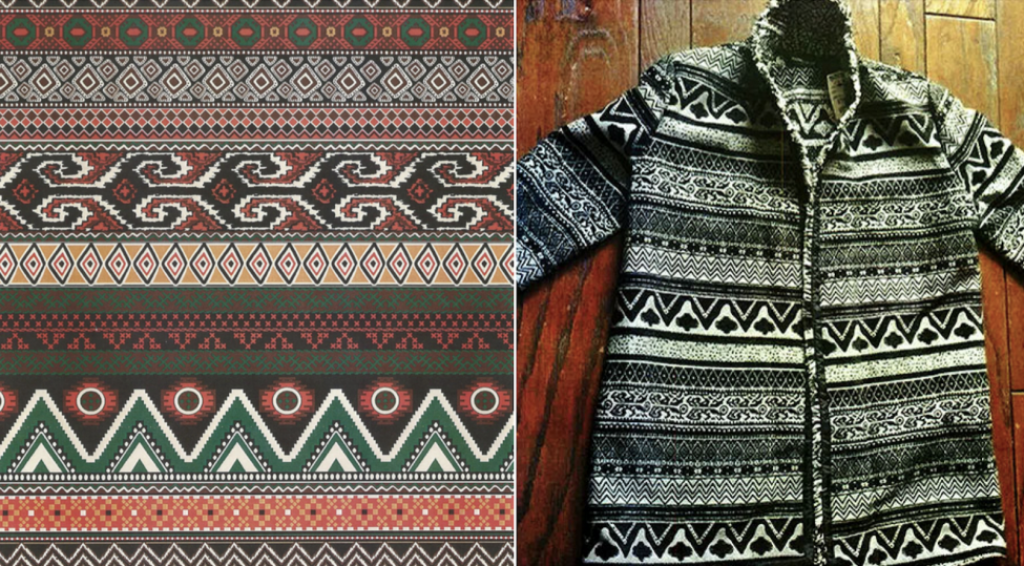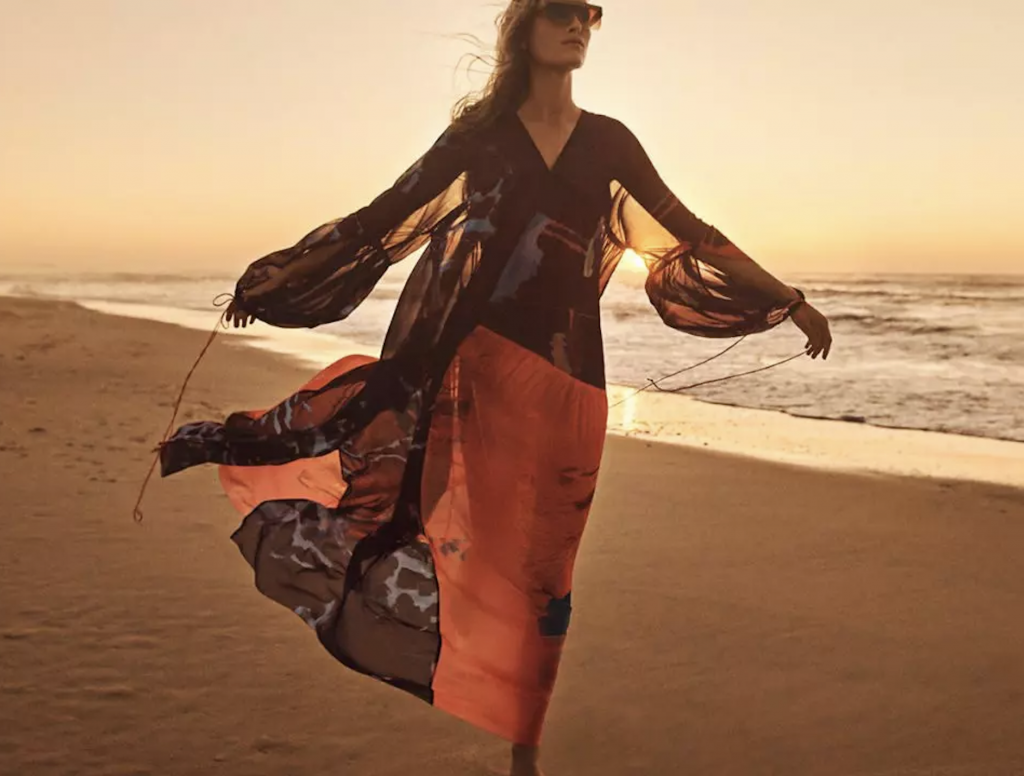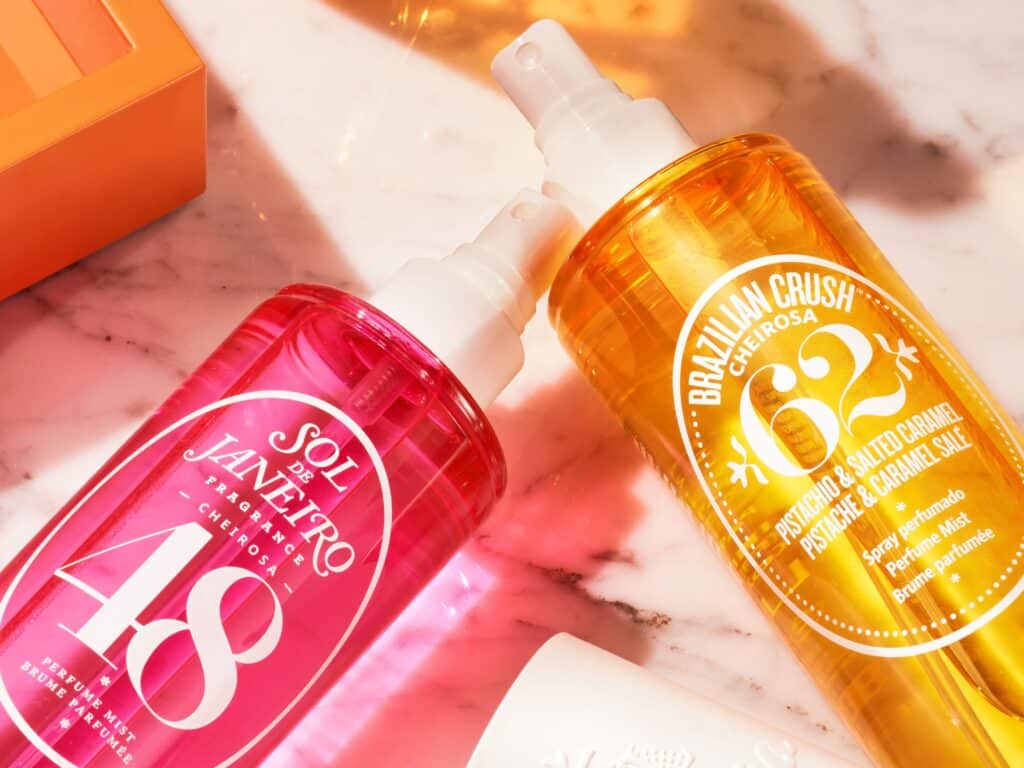The years-long legal battle between H&M and pattern-making company Unicolors might go before the Supreme Court. In a petition for a writ of certiorari filed on January 4, Southern California-based Unicolors has sought Supreme Court intervention in the copyright case that it filed against H&M with the U.S. District Court for the Central District of California back in April 2016, in which it accused the Swedish fast fashion giant of infringing one of its geometric patterns – by way of a “remarkably similar” print – for two styles of garments, a jacket and a skirt.
In light of a December 2017 jury verdict, which found that H&M had willfully infringed Unicolors’s copyright-protected pattern, and awarded Vernon, California-based Unicolors $846,720 in damages, attorney’s fees, and costs as a result, H&M appealed. The fast fashion pioneer argued that Unicolors was without a valid copyright registration for the fabric pattern at the center of the case because the copyright registration upon which it built its case – a registration for a collection of works that was issued on February 14, 2011 – is invalid. H&M argued that because Unicolors included false information in the application that it filed with the U.S. Copyright Office – namely, that the 31 different designs covered by the single-unit registration, were first published at the same time. As a result, the subsequently-issued registration is no good, counsel for H&M argued.
Despite claiming that all of the individual patterns were published together, making them an appropriate “single unit” for one collective copyright application and registration, H&M claimed that Unicolors actually sold some of the patterns separately to different customers – at different times, thereby, invalidating the company’s registration, and its infringement cause of action given the registration pre-requisite for bringing copyright infringement claims.
In a decision dated May 29, 2020, the Ninth Circuit reversed the jury verdict, with a three-judge panel for the appeals court determining that the lower court erred in requiring H&M to show that Unicolors had an “intent-to-defraud” to Copyright Office in order to invalidate Unicolors’s registration, when the “knowing” inclusion of inaccurate information in an application is enough to warrant invalidation.
More than that, the lower court made a mistake, according to the Ninth Circuit, in concluding that Unicolors’s application for registration did not contain inaccuracies when it did, in fact, run afoul of the Copyright Office’s rule regarding the registration of a collection of works as a single unit of publication. While the appeals court held that a collection of works may be registered under a single-unit registration, that is only an option when the works were first published in a singular, bundled unit. That is not what happened here, though, as while Unicolors’s application stated that all 31 of the designs were “first published as a singular, bundled unit” (i.e., first published together, at the same time), the court found that it knowingly included false information. Unicolors’ president revealed that some of the patterns included in the single-unit registration were sold to customers at different times.

The Ninth Circuit reversed the $800,000-plus damages award for Unicolors, and remanded the case to the district court for further proceedings centering on the validity of Unicolors’s registration, namely whether the inclusion of inaccurate information would have precluded the Copyright Office from issuing a registration. (As Loeb & Loeb’s Tal Dickstein and Lisa Rubin noted this spring, “The Ninth Circuit held that whenever a defendant alleges that a plaintiff’s registration contains inaccurate information that the plaintiff knowingly included in its application, Section 411(b)(2) of the Copyright Act requires district courts to ask the Register of Copyrights whether registration would have been refused if the Copyright Office had known the information was inaccurate.”)
Beyond sending a clear message to copyright registration-seeking parties to avoid submitting inaccurate, combined filings (as opposed to separate applications for non-bundled works) in an effort to cut costs, “The decision highlights a critical line of defense for alleged infringers, at least for those in the courts in the Ninth Circuit,” Frankfurt Kurnit Klein partner Jeremy Goldman stated at the time, noting that the decision – with its “narrow interpretation of the ‘single unit of publication’ rule and its evisceration of the ‘intend to defraud’ requirement for registration invalidation” – provides some “big takeaways for both copyright owners and alleged infringers.”
Fast forward to January 2021, and Unicolors is hoping to get the nation’s highest court to sound off on the case. In its January 4 petition, as first reported by Law360, Unicolors asserts that the “case is ripe for review because it is a matter of first impression for this Court and involves a clear intra-circuit conflict in the application of a federal statute.”
According to Unicolors’s Supreme Court petition, the Ninth Circuit got the case wrong, with the judges’ ruling concerning the timeline of the publication of the works covered by the single-unit copyright registration at issue was “flawed because there was no evidence supporting [their] conclusion that the designs were separately published before certain designs were categorized as confined in Unicolors’ registration certificate.” With that in mind, Unicolors claims that there was “insufficient evidence to deduce any sort of error that would require referral to the Copyright Office under 17 U.S.C. § 411(b).”
“The panel’s ruling concerning applicability of 17 U.S.C. § 411(b) was also flawed,” according to Unicolors because “many courts, legislative and administrative authorities, and the leading copyright treatise have uniformly interpreted the Prioritizing Resources and Organization for Intellectual Property Act of 2008 … to codify the doctrine of fraud on the Copyright Office and thus to allow invalidation under section 411(b) only when the registrant is shown to have acted in bad faith or intended to defraud the Copyright Office.”
With the foregoing in mind, Unicolors sets out the following questions in its petition: (1) “Did the Ninth Circuit err in breaking with its own prior precedent and the findings of other circuits and the Copyright Office in holding that 17 U.S.C. § 411 requires referral to the Copyright Office where there is no indicia of fraud or material error as to the work at issue in the subject copyright registration?,” and (2) “Did the Ninth Circuit misapply the publication standard by both applying Copyright Office requirements that were not in place at the time of registration and analyzing publication as of the date of registration as opposed to the later registration application date, and, if so, did the evidence support referral to the Copyright Office?”
Ultimately, counsel for Unicolors argues that “in vacating a substantial judgment against a willful copyright infringer based on an immaterial and good-faith technical error in its copyright registration,” the Ninth Circuit “contravened established law as well as the spirit and letter of the PRO-IP Act,” and thus, it “respectfully submit[s] that this petition for a writ of certiorari should be granted to address this injustice.”
*The case is Unicolors, Inc. v. H&M Hennes & Mauritz, L.P. et al., 2:2016-cv-02322 (C.D.Cal.).














